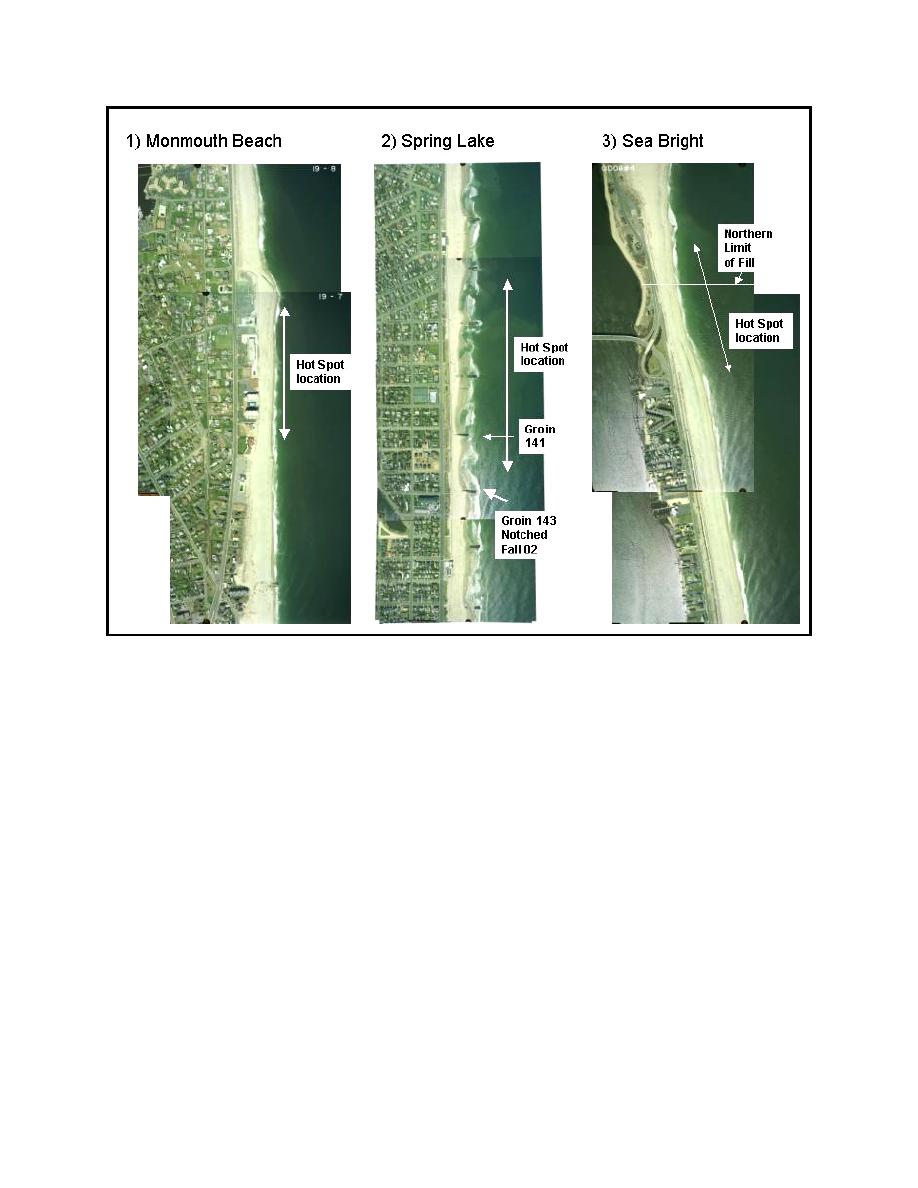
ERDC/CHL CHETN-II-47
March 2004
Figure 5.
Hot spot locations of Sea Bright to Manasquan Inlet Project (courtesy of Lynn Bocamazo,
New York District)
Groin 141 was determined to be too short and was not retaining enough material. There was also an
anomaly in the bathymetric contours offshore of the eroding area, which lead to higher energy
dissipation in the center of the eroding groin cell hot spot area. To remedy the hot spot, several
alternatives were proposed, but the State of New Jersey wanted the least effort alternative. This
consisted of placing 174,329 cu m (228,000 cu yd) of coarser fill material in the hot spot area north
of groin 143 in July 2002 and notching the groin in the fall of 2002 (Figure 5). No conclusions have
been reached yet on how well notching and larger grain size material is working to remedy the hot
spot.
The third hot spot related to this project was located at the northern end of the town of Sea Bright
just at the boundary with the Gateway national recreation area at the base of Sandy Hook. This part
of the project was initially filled between July and November 1995 and again between May and
November 1996. This area is the north end of the entire project. Monitoring profiles were examined
but no additional investigations were carried out. Monitoring data indicated that the fill material is
drifting north out of the fill limit into the recreation area (Figure 5). Renourishment material was
placed in this area to mitigate for the hot spot in September 2002. No conclusion has been made at
this time on the success of this renourishment and monitoring will continue.
8


 Previous Page
Previous Page
